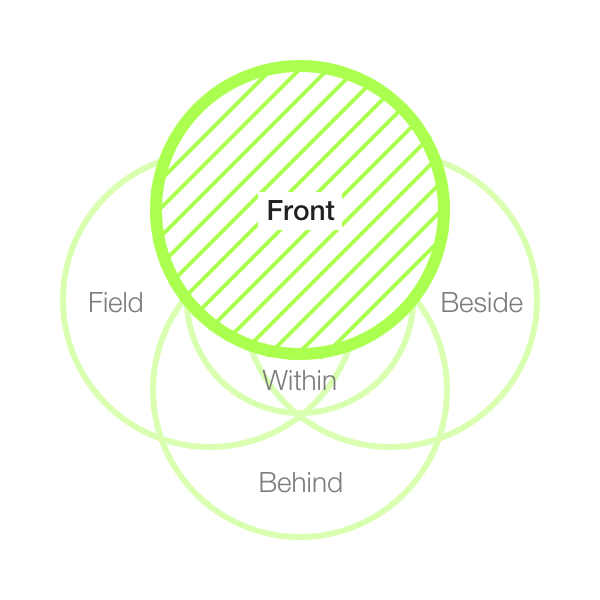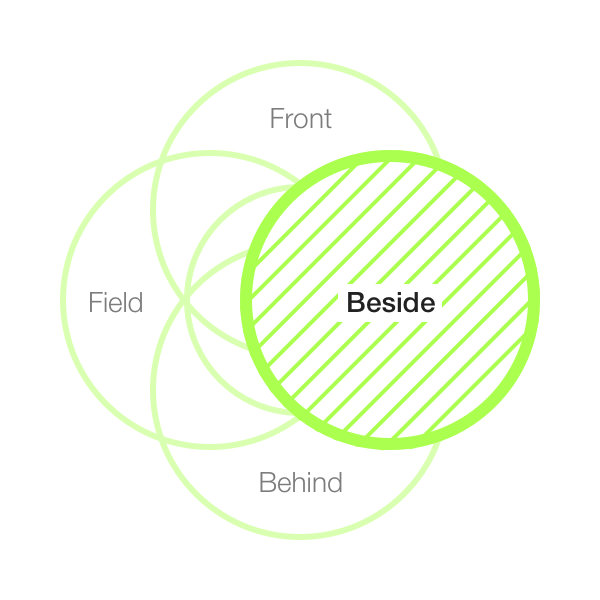Leadership is not a (single) role
Can a model that harnesses the strengths of many, rather than relying on the power of a few, be an answer to top-down, one-dimensional leadership models that might no longer apply in today’s rapidly changing world?
A few weeks ago, a post appeared in my LinkedIn feed which posed the question of whether too much emphasis is being placed on encouraging people to be leaders. In his post, Dave Duarte makes the claim that:
“[N]ot everyone wants to be a leader, and yet everyone can learn to be a better follower — to act with integrity, courage, humility and discernment even if you’re not in charge.”
Although I agree with Dave’s claim that integrity and acting with courage falls within the responsibility of everyone on a team — and not just of those in charge — the post did prompt me to reflect on what it means to be a leader in our increasingly digital, rapidly changing world, and what this means to teams working on modern, often digital products and services.
How will any work get done, Dave asks, if everyone is a leader? I think that this question misses the point that there is more than just one way to lead, and is — with all due credit to Mr. Dave for his important ideas on leadership — rooted in the top-down, one-dimensional leadership models that have become outmoded and wasteful of the leadership opportunities that are present at every level of an organisation. What if, rather, leadership could be generative, and adapt to suit the dynamic conditions we encounter in the kinds of ever-increasing complexity we have to deal with each day? What if we can shift our understanding of the role of ‘leader’ away from something in opposition to that of ‘follower’? What if we accept and take responsibility for the leadership opportunities that present themselves in our daily work and inter-personal team dynamics?
These are the questions Karen and Henry Kimsey-House confront us with, in proposing a multi-dimensional approach to leading. With the recognition that leadership has to be fluid and flexible, the authors of Co-Active Leadership present a model of the same name.
What is the Co-Active Leadership model? Let’s have a brief look.
Co-Active Leadership
The Co-Active Leadership model was designed to describe varying roles a person can play in a group. The active part of the term represents the action-oriented aspects of the model, and indeed echoes the fact that we are working towards certain outcomes in what we do everyday. The co reminds us that this work is situated within a broader world of teams and complex relationships with stakeholders, customers and end-users; there is always a relational and receptive aspect to working towards these outcomes.
By defining five roles or dimensions of leadership, the model stresses the importance of sharing leadership across roles: each one of five dimensions is important and supports the others. To be effective, leadership must be shared, and this involves team members playing different roles at different times.
“Everyone, at different times, plays all five roles, shifting from dimension to dimension as the circumstances and the needs of the moment require.”
– Karen and Henry Kimsey-House
The five dimensions of the model are
- Leader Within
- Leader in Front
- Leader Behind
- Leader Beside
- Leader in the Field
Co-Active Leader Within: Self-Acceptance and Self-Authority

Leadership begins with taking responsibility for who we are and the change we want to make in the world, and in doing so Co-Active Leaders Within lead by living their lives with integrity and modelling self-acceptance and self-authority; in this way Co-Active Leader Within is the foundation, the starting point for every other form of leadership. Co-Active Leaders Within take responsibility for their world by accepting themselves fully and living their lives within integrity in accordance with their personal values.
This dimension makes room for us to prove our worth by being who we are authentically, and not just by performing according to some prescribed measure. This demands the self-awareness of seeing who we are in relation to those we impact, and asking ourselves: ‘is the person I want to be?’
Co-Active Leader in Front: Connection and Direction

When we think of leadership, we likely tend to think of the Leader in Front dimension; indeed, I believe that this is the dimension Mr. Duarte singles out in his post on being a leader. However, this dimension is about more than delivering instruction, and represents something other than the obverse of “following”. Co-Active Leaders in Front foster connections with the people who are following them and stand firmly for a clear direction and purpose; team members feel inspired, engaged and clear on intended outcomes.
While the Co-Active Leader in Front is willing to be the one in front and takes responsibility to give direction, she also knows when to step back and make room for other’s contributions — she is not ensnared by her ego, nor defined by her role.
Co-Active Leader Behind: Serving and Coaching

Co-Active Leaders Behind understand that whole-hearted participation — ours and that of our team members — is a critical part of any endeavour. The essence of this dimension is service to others; through open-hearted and enthusiastic participation, Co-Active Leaders Behind advance action in a way that holds everyone together; these leaders often form the backbone of an organisation or project.
Co-Active Leader Beside: Partnership and synergy

Whereas co-leading is typically understood to mean the division of responsibility, Co-Active Leaders Beside is a true partnership between two people in which both share full responsibility for every part of the initiative. Co-Active Leaders Beside are committed to balancing openness and curiosity about the other person with a commitment to take a stand on their own authority.
Co-leaders in this dimension are both — in their co-operation — committed to something larger than being right about their own point of view, and therefore can disagree with each other in a way that is dynamic and constructive.
Co-Active Leader in the Field: Intuition and Innovation

Co-Active Leader in the Field is about noticing and taking responsibility for our impacts in and on our world; it connects us to a global sense of the world we are creating.
In this dimension, we slow down and observe the deeper implications of both the initiatives we are involved in and what is happening in the world around us. In so doing, we are able to discover patterns and cycles that can lead us to new insights and, ultimately, take responsibility for our world.
So, where do we go from here?
In their book, Karen and Henry Kimsey-House define leadership as “those who are responsible for their world.” According to this definition, everyone who is working towards a change in their world is a leader; leadership becomes about initiative — taking responsibility.
By identifying and clarifying the dimensions of leadership, and the corresponding roles that we and our peers play in different contexts, we can empower each other as co-active leaders. By becoming conscious of the leadership role(s) you tend to play and the ones you are most comfortable with, you can learn to identify which are missing in different contexts, you can place a deliberate focus on becoming more comfortable with playing the other roles, and you can learn to support the roles of other leaders — with an understanding that every position in our team is a leadership position.
Which of the dimensions do you feel most comfortable with? Which may you want to challenge yourself to explore? In upcoming posts, I’ll explore the different dimensions of the Co-Active Leadership model in more depth, to learn more about the opportunities and potential pitfalls of each.
